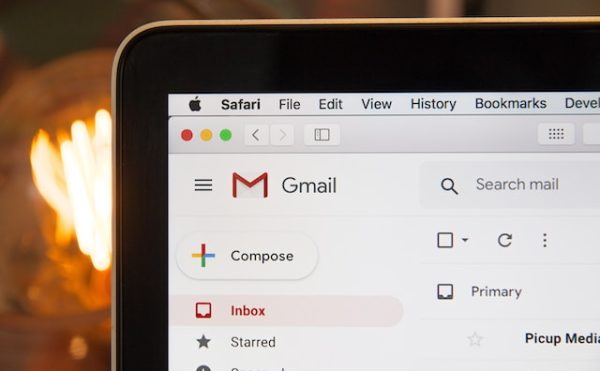Cloud apps have changed how humans use technology. Instead of keeping programs on the devices, you can now access them through the internet. This is better in many ways, but it’s important to know how to get cloud app. In this article, we’ll explain how to get the best cloud app for you. If you’re interested, keep reading!
How to Get Cloud App: The Definition
Before delving into the topic of how to get cloud app, it’s important to have a clear understanding of what precisely a cloud app entails.
Cloud apps, short for cloud applications, are software programs that work on the internet and are hosted on servers that aren’t on your device. They don’t need to be downloaded and installed on your phone or computer. Fortunately, you only have to prepare an internet connection.
In contrast to traditional desktop applications, cloud apps do not necessitate installation on individual computers. Instead, updates can be easily implemented by uploading newer versions to the web server.
Typically, cloud app servers are hosted in remote data centers provided by third-party cloud services infrastructure providers. This arrangement ensures efficient and scalable access to the application’s functionalities.
The Example of Cloud App
When it comes to how to get cloud app, there are plenty of options to choose from. Below are some of the most-sought web-based Apps on the internet:
1. Google Docs
Google Docs is an exemplary cloud-based application offered by Google. This app has revolutionized the way we create and collaborate on documents. As a part of the Google Workspace suite, Google Docs allows users to create, edit, and store documents online.
Likewise, the real-time collaboration feature is particularly noteworthy, allowing multiple users to work on the same document simultaneously. This feature makes Google Docs an ideal tool for team projects, remote work, and education.
Additionally, with automatic cloud-based saving, users don’t have to worry about losing their work. Also, accessing documents from any device with an internet connection further enhances productivity and flexibility.
2. Office 365
Another popular cloud app suite is Microsoft 365, formerly Office 365. It includes various applications like Word, Excel, PowerPoint, and Outlook, among others.
This productivity suite is cloud-based, allowing users to work across devices, and files are automatically saved online. Besides, OneDrive is a cloud storage solution that ensures secure file storage and easy sharing with others.
Furthermore, Microsoft 365 also has real-time collaborative features. It allows users to edit, leave comments, and track versions, which makes teamwork more efficient and document management more streamlined.
3 Kinds of Cloud Apps: Choose Before How to Get Cloud App
Cloud app comes in different flavors, catering to various needs and preferences. Let’s explore three common types:
1. Software-as-a-Service (SaaS)
SaaS delivers ready-to-use software over the Internet. You don’t need to install anything. Instead, just access the application through your web browser. For instance, Google Docs and Office 365, offer productivity tools with easy collaboration features.
2. Platform-as-a-Service (PaaS)
PaaS provides a platform for developers to build and deploy applications without worrying about managing the underlying infrastructure. It’s like a virtual playground for creating apps.
3. Infrastructure-as-a-Service (IaaS)
IaaS offers virtualized computing resources over the Internet. It’s like renting a fully equipped data center where you can control the infrastructure and install your preferred software.
Cloud Apps Benefits
Many users prefer cloud apps due to the advantages they offer. What are they? Read the simple explanation below.
1. Accessibility and Convenience
Cloud apps provide users with accessibility and convenience as they can access them from any internet-connected device, including laptops, tablets, or smartphones. As a result, it allows users to work or access their data from anywhere, providing unparalleled convenience and flexibility.
2. Real-Time Collaboration
Team members can collaborate seamlessly with cloud apps, regardless of location. Likewise, they can work on the same document or project simultaneously, promoting efficient teamwork and communication.
3. Automatic Updates and Maintenance
Cloud applications are great because you don’t have to worry about updating them manually. Nevertheless, the company provides the service and handles all the updates and maintenance. Thus, you can always enjoy the latest features and security improvements without hassle.
4. Cost-Effectiveness
Indeed, cloud apps are a great way to save money on hardware and infrastructure costs. You can only pay for the services and resources you require. Thus, it’s a cost-effective solution for both businesses and individuals.
5. Data Security and Backup
Reputable cloud service providers implement robust security measures to safeguard user data. Additionally, cloud apps often include automatic data backup, reducing the risk of data loss and offering peace of mind.
Step-by-Step Guide on How to Get Cloud App
Actually, how to get cloud app is a straightforward process, and here’s a step-by-step guide to help you along the way:
- First, choose the right cloud service provider. You can research and select a reliable cloud service provider that offers the apps you need. Look for reputable companies with good user reviews.
- After that, sign up for a cloud account with your chosen provider. This account will be your gateway to access various cloud apps and services.
- Next, select the desired cloud app. You can browse the available cloud app and choose the ones that suit your needs. Whether it’s productivity tools, communication apps, or storage solutions, there’s a wide range of options.
- Once you’ve selected your desired apps, install them on your devices. Most cloud apps are accessible via web browsers, but some may require specific applications to be installed.
- After that, familiarize yourself with the app’s features. Take some time to explore and familiarize yourself with the features of each app. This will help you make the most out of their functionalities.
- Lastly, ensure data security and privacy settings. Review the security and privacy settings of your cloud apps. Create strong passwords and don’t forget to enable two-factor authentication for added protection.
However, you must stay up-to-date with the latest cloud app features and updates. Cloud apps continually evolve, with new features and improvements regularly rolling out.
By following these steps, you’ll be all set to harness the power of cloud apps and unlock a world of convenience, collaboration, and productivity.
After Knowing How to Get Cloud App, Which Suits You The Most?
The world of cloud apps is constantly evolving, and as technology advances, they will become even more powerful and versatile. By embracing cloud technology, we are moving towards a more connected and streamlined future.
Whether you’re a student, professional, or business owner, integrating cloud apps into your daily workflow can significantly improve productivity and simplify tasks. So, after knowing how to get cloud app, let’s embrace the cloud and embark on a journey of seamless collaboration for growth in the digital age!
Bagikan










